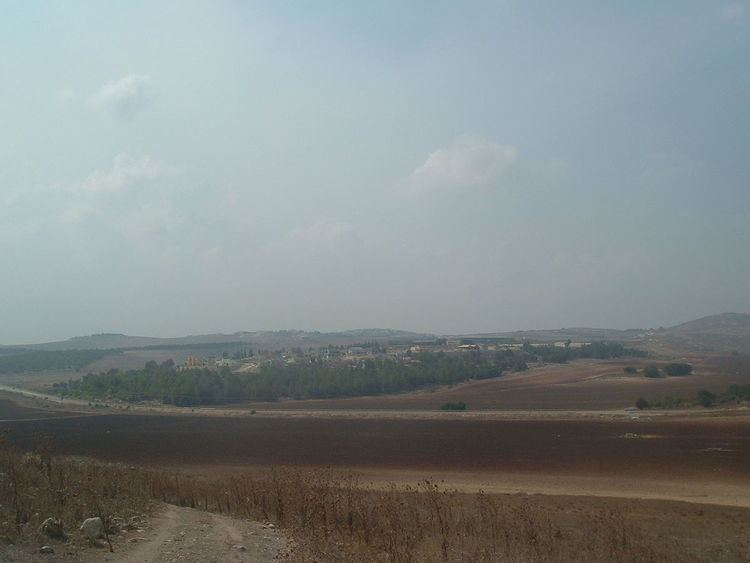Local time Wednesday 8:18 PM | Founded 1984 Population (2015) 794 | |
 | ||
Weather 9°C, Wind W at 3 km/h, 96% Humidity | ||
Hanaton (Hebrew: חַנָּתֹן, חנתון) is a kibbutz in northern Israel. Located twelve kilometers north of Nazareth near the Arab town of Shefaram, it falls under the jurisdiction of Jezreel Valley Regional Council. In 2015 it had a population of 794.
Contents
Map of Hanaton, Israel
Etymology
The biblical name Hanaton (Hebrew: חַנָּתֹן) appears in the Book of Joshua (19:14), where it is listed as in the area of the tribe of Zevulun, forming the border with the tribe of Asher's area.
Archaeology
Tel Hanaton, an archaeological site associated with the biblical location lies to the east of the kibbutz. The tel is in the western end of the Beit Netofa Valley, and covers an area of roughly 100 dunam (25 acres). It was occupied from the Bronze Age through the Ottoman Empire.
Geography
Kibbutz Hanaton overlooks Lake Eshkol, an important component of the National Water Carrier (Lake Eshkol is a 4.5 million m3 reservoir which Hanaton overlooks at the end of the Beit Netofa Canal). To the north of the kibbutz is the Arab village of Kafr Manda. Southwest of the kibbutz, across highway 79, lies Alon HaGalil.
History
In the 1980s, inspired by the Reform movement's first kibbutz, Yahel, a group of students affiliated with the Jewish Theological Seminary in New York City decided to establish a kibbutz for adherents of Conservative Judaism. Gar'in Nitzan recruited members from across the United States and joined forces with the Israeli branch, the Masorti Movement. In Israel, they hired rabbi Ehud Bandel to organize high school seniors interested in joining a Nahal gar'in. On 1 September 1983, Gar'in Noam (30 members, aged 18–19) moved to Kfar HaHoresh for training. They were joined by Gar'in Nitzan (40 members, aged 19–35, including several families with small children). In September 1984, the founders moved into the new kibbutz, which was named for a biblical town that existed in the area and is mentioned in the Book of Joshua. The founders were later joined by immigrants from South Africa, South America, the Netherlands, and Canada. In 1997 the United Kibbutz Movement began to send HaNoar HaOved VeHaLomed groups to the kibbutz, but they have not been accepted as full-fledged members for ideological reasons.
In 2006, in the wake of financial difficulties, attorney Sagi Mirom was appointed as a dissolution trustee. Under his stewardship the annual deficit of 80,000 NIS (about $22,000 US at the time) was reversed, and the kibbutz recovered economically.
In 2008, it was decided to recharter Hanaton as a "renewed kibbutz" (Hebrew: קיבוץ מתחדש). Since March 2011, the kibbutz has been accepting new members and new housing units are under construction.
Economy
In its early years, the kibbutz engaged in agriculture. A small crafts business, Hadran, manufactures rug kits. The kibbutz operates a dairy in partnership with Kibbutz Gat and a state-of-the-art chicken coop where chicken and turkey hatchlings are raised in a controlled, computerized environment. It grows greenhouse tomatoes, table grapes and grapefruits. A primary source of income is the Education & Lodging Center that provides lodging and workshops for Conservative Jewish youth groups from North America.
